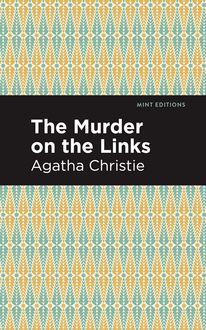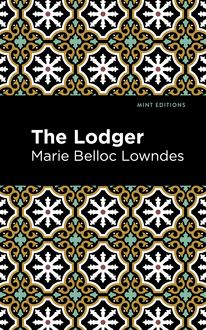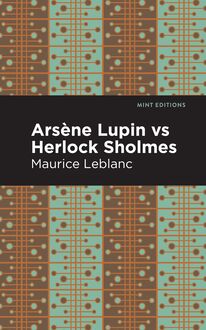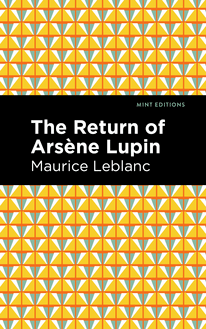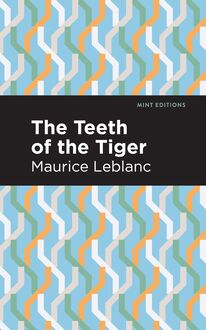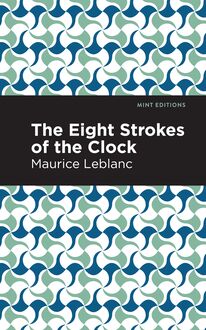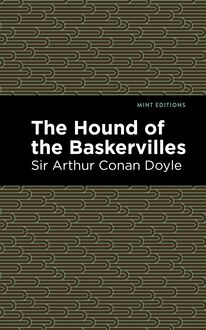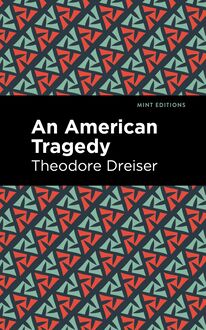-
 Univers
Univers
-
 Ebooks
Ebooks
-
 Livres audio
Livres audio
-
 Presse
Presse
-
 Podcasts
Podcasts
-
 BD
BD
-
 Documents
Documents
-
- Cours
- Révisions
- Ressources pédagogiques
- Sciences de l’éducation
- Manuels scolaires
- Langues
- Travaux de classe
- Annales de BEP
- Etudes supérieures
- Maternelle et primaire
- Fiches de lecture
- Orientation scolaire
- Méthodologie
- Corrigés de devoir
- Annales d’examens et concours
- Annales du bac
- Annales du brevet
- Rapports de stage
La lecture à portée de main
Vous pourrez modifier la taille du texte de cet ouvrage
Découvre YouScribe en t'inscrivant gratuitement
Je m'inscrisDécouvre YouScribe en t'inscrivant gratuitement
Je m'inscrisEn savoir plus
Vous pourrez modifier la taille du texte de cet ouvrage
En savoir plus

Description
The Perfume of the Lady in Black (1908) is a novel by French writer Gaston Leroux. The Perfume of the Lady in Black marked the second appearance of popular character Joseph Rouletabille, a reporter and part-time sleuth who features in several of Leroux’s novels. Originally a journalist, Leroux turned to fiction after reading the works of Arthur Conan Doyle and Edgar Allan Poe. Often considered one of the best mysteries of all time, the novel has been adapted several times for film. Joseph Rouletabille is more than meets the eye. A reporter by profession, he spends his free time working as an amateur detective, using his journalistic talents to compile facts and track down leads. In The Mystery of the Yellow Room, he saved the life of Mathilde Stangerson, the daughter of a prominent professor, from the clutches of Ballmeyer, a violent criminal mastermind gifted in the art of disguise. Unbeknownst to her father, Mathilde had married Ballmeyer while living in America before realizing he had been living under a false identity. Now believed to be dead, Ballmeyer fades into history as Rouletabille, his assistant Sainclair, and Mathilde return to their lives. Shortly after leaving for her honeymoon with Robert Darzac, however, Mathilde contacts Rouletabille with terrifying news—their common enemy seems to have returned. The Perfume of the Lady in Black is a story of mystery and suspense from one of history’s finest detective novelists. Joseph Rouletabille is without a doubt France’s answer to Sherlock Holmes. With a beautifully designed cover and professionally typeset manuscript, this edition of Gaston Leroux’s The Perfume of the Lady in Black is a classic of French literature reimagined for modern readers.
Sujets
Informations
| Publié par | Mint Editions |
| Date de parution | 28 mai 2021 |
| Nombre de lectures | 0 |
| EAN13 | 9781513287966 |
| Langue | English |
Informations légales : prix de location à la page 0,0500€. Cette information est donnée uniquement à titre indicatif conformément à la législation en vigueur.
Extrait
The Perfume of the Lady in Black
Gaston Leroux
The Perfume of the Lady in Black was first published in 1909.
This edition published by Mint Editions 2021.
ISBN 9781513282947 | E-ISBN 9781513287966
Published by Mint Editions ®
minteditionbooks.com
Publishing Director: Jennifer Newens
Design & Production: Eachel Lopez Metzger
Project Manager: Micaela Clark
Typesetting: Westchester Publishing Services
C ONTENTS I. W HICH B EGINS W HERE M OST R OMANCES E ND II. I N W HICH T HERE IS Q UESTION OF THE C HANGING R UMOURS OF J OSEPH R OULETABILLE III. T HE P ERFUME IV. E N R OUTE V. P ANIC VI. T HE F ORT OF H ERCULES VII. W HICH T ELLS OF S OME P RECAUTIONS T AKEN B Y J OSEPH R OULETABILLE TO D EFEND THE F ORT OF H ERCULES A GAINST THE A TTACK OF AN E NEMY VIII. W HICH C ONTAINS S OME P AGES F ROM THE H ISTORY OF J EAN R OUSSEL -L ARSAN B ALLMEYER IX. I N W HICH “O LD B OB ” U NEXPECTEDLY A RRIVES X. T HE E VENTS OF T HE T WELFTH OF A PRIL XI. T HE A TTACK OF THE S QUARE T OWER XII. T HE I MPOSSIBLE B ODY XIII. I N W HICH THE F EARS OF R OULETABILLE A SSUME A LARMING P ROPORTIONS XIV. T HE S ACK OF P OTATOES XV. T HE S IGHS OF THE N IGHT XVI. D ISCOVERY OF “A USTRALIA ” XVII. O LD B OB ’ S T ERRIBLE A DVENTURE XVIII. H OW D EATH S TALKED A BROAD AT N OON D AY XIX. I N W HICH R OULETABILLE O RDERS THE I RON D OORS TO B E C LOSED XX. I N W HICH R OULETABILLE G IVES A C ORPOREAL D EMONSTRATION OF THE P OSSIBILITY OF “T HE B ODY OF T OO M ANY ” E PILOGUE
I
W HICH B EGINS W HERE M OST R OMANCES E ND
T he marriage of Mr. Robert Darzac and Miss Mathilde Stangerson took place in Paris, at the Church of St. Nicolas du Chardonnet, on April 6, 1895, everything connected with the occasion being conducted in the quietest fashion possible. A little more than two years had rolled by since the events which I have recorded in a previous volume—events so sensational that it is not speaking too strongly to say that an even longer lapse of time would not have sufficed to blot out the memory of the famous “Mystery of the Yellow Room.”
There was no doubt in the minds of those concerned that, if the arrangements for the wedding had not been made almost secretly, the little church would have been thronged and surrounded by a curious crowd, eager to gaze upon the principal personages of the drama which had aroused an interest almost world wide and the circumstances of which were still present in the minds of the sensation-loving public. But in this isolated little corner of the city, in this almost unknown parish, it was easy enough to maintain the upmost privacy. Only a few friends of M. Darzac and the Professor Stangerson, on whose discretion they felt assured that they might rely, had been invited. I had the honour to be one of the number.
I reached the church early, and naturally, my first thought was to look for Joseph Rouletabille there. I had been somewhat surprise at not seeing him, but, having no doubt that he would arrive shortly, and, I entered the pew and already occupied by M. Henri-Robert and M. Andre Hesse, who, in the quiet shades of the little chapel, exchanged the undertones reminiscences of the strange affair at Versailles, which the approaching ceremony brought to their memories. I listened without paying much attention to what they were saying, glancing from time to time carelessly around me.
A dreary place enough is the Church of St. Nicolas du Chardonnet. With its cracked walls, the lizards running from every corner and dirt—not the beautiful dust of ages, but the common, ill-smelling, germ-laden dust of today—everywhere, this church, so dark and forbidding on the outside, is equally dismal within. The sky, which seems rather to be withdrawn from the above the edifice, sheds a miserly light which seems to find the greatest difficulty in penetrating through the dusty panes of unstained glass. Have you read Renan’s “Memories of Childhood and Youth?” Push the door of St. Nicolas du Chardonnet and you will understand how the author of the “Life of Jesus” longed to die, when as a lad he was a pupil in the little seminary of the Abbe Duplanloup, close by, and could only leave the school to come to pray in this church. And it is in this funeral darkness, in a scene which seemed to have been painted only for mourning and for all rites consecrated to sorrow, that the marriage of Robert Darzac and Mathilde Stangerson was to be solemnised. I could not cast aside the feeling of foreboding that came over me in these dreary surroundings.
Beside me, M. Henri-Robert and M. Andr é Hesse continued to chat, and my wandering attention was arrested by a remark made by the former:
“I never felt quite easy about Robert and Mathilde,” he said—“not even after the happy termination of the affair at Versailles—until I know that the information of the death of Frederic Larsan had been officially confirmed. That man was a pitiless enemy.”
It will be remembered, perhaps, by the readers of “The Mystery of the Yellow Room” that a few months after the acquittal of the Professor in Sorbonne, there occurred the terrible catastrophe of La Dordogne, a transatlantic steamers, running between Havre and New York. In the broiling heat of a summer night, upon the coast of the New Worl, La Dordogne had caught fire from an overheated boiler. Before help could reach her, the steamer was utterly destroyed. Scarcely thirty passengers were able to leap into the life boats, and these were picked up the next day by a merchant vessel, which conveyed them to the nearest port. For days thereafter, the ocean cast up on the beach hundreds of corpses. And among these, they found Larsan.
The papers which were found carefully hidden in the clothing worn by the dead man, proved beyond a doubt his identity. Mathilde Stangerson was at last delivered from this monster of a husband to whom, through the facility of the American laws, she had given her hand in secret, in the unthinking ardour of girlish romance. This wretch, whose real name, according to court records, was Ballmeyer, and who had married her under the name of Jean Rouseel, could no longer rise like a dark shadow between Mathilde and the man whom she had loved so long and so well, without daring to become his bride. In “The Mystery of the Yellow Room,” I have related all the details of this remarkable affair, one of the strangest which has ever been known in the annals of the Court of Assizes, and which, without doubt, would have had a most tragic denouncement, had it not been for the extraordinary party played by a boy reporter, scarcely eighteen years old, Joseph Rouletabille, who was the only one to discover that Frederic Larsan, the celebrated Secret Service agent, was none other than Ballmeyer himself. The accidental—one might almost say “providential”—death of this villain, had seemed to assure a happy termination to the extraordinary story, and it must be confessed that it was undoubtedly one of the chief factors in the rapid recovery of Mathilde Stangerson, whose reason had been almost overturned by the mysterious horrors at the Glandier.
“You see, my dear friend,” said M. Henri-Robert to M. Andr é Hesse, whose eyes were roving restlessly about the church, “you see, in this world, one can always find the bright side. See how beautifully everything has turned out—even the troubles of Mlle. Stangerson. But why are you constantly looking around you? What are you looking for? Do you expect anyone?”
“Yes,” replied M. Hesse. “I am waiting for Fr é d é ric Larsan!”
M. Henri-Robert laughed—a decorous little laugh, in deference to the sanctity of the surroundings. But I felt no inclination to join in his mirth. I was an hundred leagues from foreseeing the terrible experience which was even then approaching us; but when I recall that moment and seek to blot out of my mind all that has happened since—all those events which I intend to relate in the course of this narrative, letting the circumstances come before the reader as they came before us during their development—I recollect once more the curious unrest which thrilled me at the mention of Larsan’s name.
“What’s the matter, Sainclair?” whispered M. Henri-Robert, who had noticed Something odd in my expression. “You know that Hesse was only joking.”
“I don’t know anything about it,” I answered. And I looked attentively around me, as M. Andre Hesse had done. And, indeed, we had believe Larsan dead so often when he was known as Ballmeyer, that it seemed quite possible that he might be once more brought to life in the guise of Larsan.
“Here comes Rouletabille, remarked M. Henri-Robert. “I’ll wager that he isn’t worried about anything.”
“But how pale he is!” exclaimed M. Andre Hesse in an undertone.
The young reporter joined us and pressed our hands in an absent-minded manner.
“Good morning, Sainclair. Good morning, gentlemen. I am not late, I hope?”
It seemed to me that his voice trembled. He left our pew immediately and withdrew to a dark corner, where I beheld him kneel down like a child. He hid his face, which was indeed very pale, in his hands, and prayed. I had never guessed that Rouletabille was of a religious turn of mind, and his fervent devotion astonished me. When he raised his head, his eyes were filled with tears. He did not even try to hide them. He paid no attention to anything or anyone around him. He was lost completely in his prayers, and, one might imagine, his grief.
But what could be the occasion of his sorrow? Was he not happy at the prospect of the union so ardently desired by everyone? Had not the good fortune of Mathilde Stangerson and Robert Darzac been in a great measure brought about by his efforts? After all, it was perhaps from joy, that the lad had wept. He rose from his knees, and was hidden behind a pillar. I made no endeavour to join him, for I could see that he was anxious to be alone.
And the next moment, Mathilde Stangerson made her entrance into the church upon the arm of her f
-
 Univers
Univers
-
 Ebooks
Ebooks
-
 Livres audio
Livres audio
-
 Presse
Presse
-
 Podcasts
Podcasts
-
 BD
BD
-
 Documents
Documents
-
Jeunesse
-
Littérature
-
Ressources professionnelles
-
Santé et bien-être
-
Savoirs
-
Education
-
Loisirs et hobbies
-
Art, musique et cinéma
-
Actualité et débat de société
-
Jeunesse
-
Littérature
-
Ressources professionnelles
-
Santé et bien-être
-
Savoirs
-
Education
-
Loisirs et hobbies
-
Art, musique et cinéma
-
Actualité et débat de société
-
Actualités
-
Lifestyle
-
Presse jeunesse
-
Presse professionnelle
-
Pratique
-
Presse sportive
-
Presse internationale
-
Culture & Médias
-
Action et Aventures
-
Science-fiction et Fantasy
-
Société
-
Jeunesse
-
Littérature
-
Ressources professionnelles
-
Santé et bien-être
-
Savoirs
-
Education
-
Loisirs et hobbies
-
Art, musique et cinéma
-
Actualité et débat de société
- Cours
- Révisions
- Ressources pédagogiques
- Sciences de l’éducation
- Manuels scolaires
- Langues
- Travaux de classe
- Annales de BEP
- Etudes supérieures
- Maternelle et primaire
- Fiches de lecture
- Orientation scolaire
- Méthodologie
- Corrigés de devoir
- Annales d’examens et concours
- Annales du bac
- Annales du brevet
- Rapports de stage
